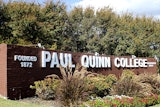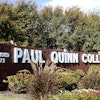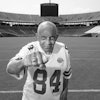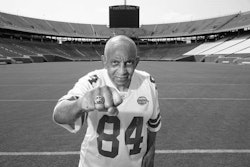The disparity between the graduation rates of Black and White athletes playing on NCAA Division I Men’s Basketball Tournament Teams is narrowing primarily because fewer Whites are graduating, says a new report on diversity and ethics in sport.
The Graduation Success Rate (GSR) for male Black basketball players rose a point to 60 percent from 59 percent, according to the annual analysis of NCAA data performed by The Institute for Diversity and Ethics in Sport (TIDES), based at the University of Central Florida. The GSR for White male basketball players dropped to 88 percent from 91 percent. The overall Graduation Success Rate rose by a point to 67 percent, says the study, “Keeping Score When It Counts.”
“…The most troubling statistic in our study is the continuing large disparity between the GSR of White basketball student athletes and African-American basketball students,” says Dr. Richard Lapchick, the primary author of the study and director of the institute.
“Although the gap closed by 4 percent, it remains an embarrassing 28 percent,” says Lapchick. “The primary reason for most of the change in disparity was the decrease in the GSR of White student athletes.”
The study is based on reviews of freshman class enrollments of 2004-05, the most recent cohort that meet the NCAA criteria of measuring based on a six-year graduation scale. The schools are selected based on the 68 teams that qualify for the current year’s (2012) tournaments.
The “Keeping Score” study also found that the number of 2012 tournament teams that graduated 50 percent or more of their student athletes rose by 3 percent to 79 percent (54 teams) from 76 percent (51) teams. At the same time, the report found, the percentage of teams with graduation rates above 70 percent and above 60 percent each declined.
Hampton University President William Harvey, a member of the NCAA Division I Board of Directors, says the latest Lapchick study reinforces the need for more funds to enhance academic support for student athletes who are underperforming academically and are in need of assistance.
Harvey says he has been promised by NCAA leaders Mark Emmert and Bernard Franklin that more NCAA revenue would be forthcoming to underwrite the costs of more academic counselors and technology for student athletes.
“I am for the increased standards, but I indicated to them we need more to hire counselors and increase technology,” says Harvey. “They promised they are going to do it.”
The NCAA board meets in April at which time it will distribute more that $150 million in revenue from its basketball fund based on the success of its 2011 March Madness tournaments. There are no restrictions on how conference member institutions are to use the funds.
The “Keeping Score” study says it was encouraged by its findings in analyzing the Academic Performance Rates (APR) of NCAA Division I schools. The APR, developed in 2004, is an academic performance average used by the NCAA to determine an institution’s eligibility to qualify for the postseason athletic participation. The study says fewer and fewer institutions are falling into the ranks of the ineligible.
The institute plans to release its comparable study on women’s teams on Wednesday. Historically, the academic performance of women student athletes has been better than that of their male counterparts.


















